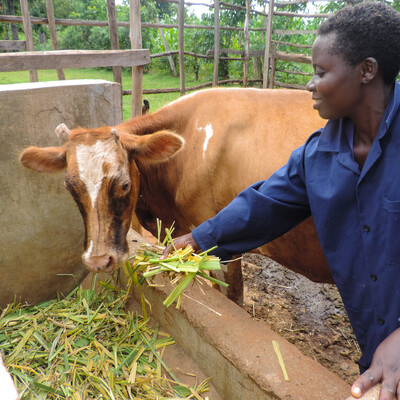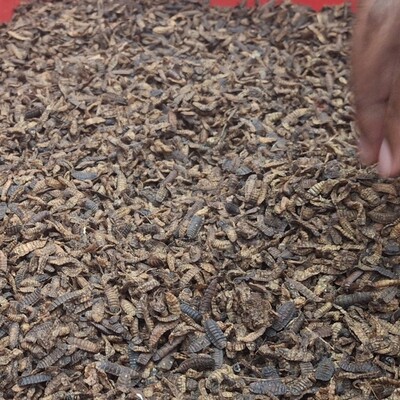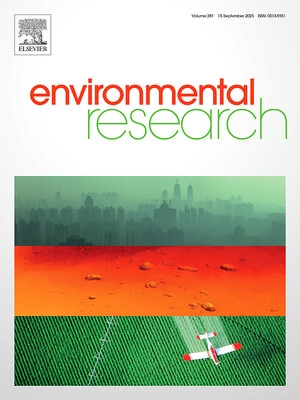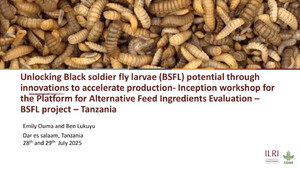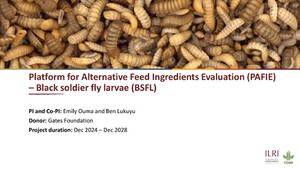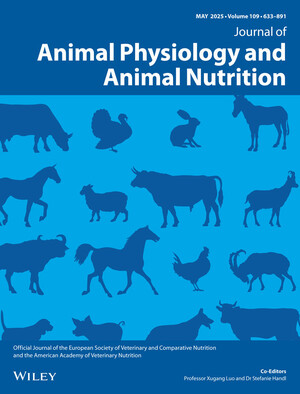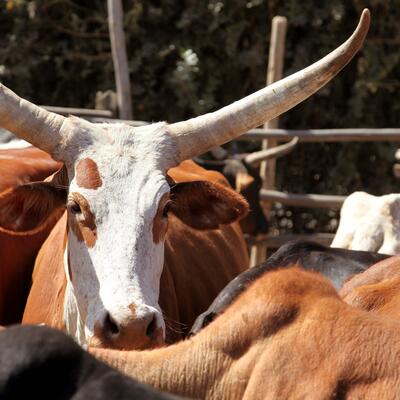
Improved feeds transforming livestock production and livelihoods in Zimbabwe
This post was written by Johnson Siamachira, communications officer at the French Agricultural Research Centre for International Development in Zimbabwe, and edited by Terry Mwenda and Paul Karaimu.
Small-scale farmers drive Zimbabwe's agriculture, which in turn drives the country’s economy. The livelihoods of more than half of the 15 million citizens depend on agriculture but productivity is generally low due to climate change, input shortages and limited knowledge of good agricultural practices. As a result, many rural Zimbabwean households rely on food aid to meet their nutritional requirements.
Small-scale farmers manage 90% of the southern African nation’s 5.5 million cattle. But they face numerous challenges in transitioning to commercial livestock production, which would ultimately increase their incomes, improve the country’s food security, and create jobs.
The Livestock Production Systems in Zimbabwe (LIPS-Zim) project, which started in 2020, aims to bridge this gap. The four-year European Union-funded project focuses on increasing agricultural productivity in nine districts in Zimbabwe’s agro-ecological regions IV and V. These are semi-arid areas that receive little rainfall and where crop production is nearly impossible without irrigation.
‘This project uses a holistic approach that includes herd rationalization, good animal husbandry practices and critical business development skills,’ explains Sikhalazo Dube, the project coordinator. ‘Without a basic understanding of good agricultural practices in livestock production, most smallholder farmers cannot sustain livestock herds to move past subsistence livestock farming.’
Maureen Javangwe-Chauke, a smallholder from Ward 15 of Gwanda District in Matabeleland South Province, was the first female farmer from her district to join the LIPS-Zim project. Like many cattle keepers, the widow struggled with the high cost of feed, which can account for up to 70% of livestock production costs in Zimbabwe.
Maureen’s was one of the households selected for livestock feed trials using diets based on velvet bean (Mucuna pruriens), hyacinth bean (Lablab purpureus) and cowpea (Vigna unguiculata). The farmers were also trained on how to grow drought-tolerant forages, produce hay and make home-based feeds.
The lablab and mucuna-based feeds, which cost USD0.30 and USD0.33 per kilogram, respectively, have reduced production costs and increased the value of the livestock. The average live weight of the cattle has increased from 400 kg to 520 kg.
By rearing better quality livestock, the smallholder farmers in the LIPS-Zim project feed trial have been able to access reliable and lucrative markets outside their localities. Local rural markets are small and trading in distant urban markets was previously unprofitable because of high transport costs.
‘Before joining the feed trials, I sold my beef cattle for USD 350 each but each animal now fetches USD 700. I sell four to 10 cows annually to a commercial buyer who collects them from my farm, so I have also cut down on transportation costs,’ says Maureen.
She is ploughing most of her proceeds into her children’s education. At the start of the project, Maureen had 17 cattle. In 2021, she sold 10 to raise university fees for her three children. By the end of the year, she had grown her herd size to 18, ready for the next round of school payments, which add up to USD 6,550 per year.
The investment in education is bearing fruit. One of her children has recently graduated from the University of South Africa and the second will graduate this year. Life is looking up on the home front as well. ‘I can purchase sugar, cooking oil, soap and flour in cartons—a development I never dreamt possible. I have even renovated one of our family houses,’ Maureen points out.
By the end of the LIPS-Zim project in 2023, the project is expected to have increased incomes and ensured the food security of 50,000 rural Zimbabweans. Helping farmers improve their productivity and quality is an important first step, but the project is also ensuring that farmers have access to reliable markets and buyers, establishing sustainability.
‘By investing in the development of livestock agribusinesses, families will have a more consistent source of food and income throughout the year,’ says Irenie Chakoma, research associate at the International Livestock Research Institute (ILRI) in Zimbabwe. ‘In the long-term, these farming activities help communities withstand future food crises and increase income-earning opportunities.’
The LIPS-Zim project is being implemented by ILRI in collaboration with the French Agricultural Research Centre for International Development (CIRAD), the International Maize and Wheat Improvement Center (CIMMYT), the University of Zimbabwe’s faculty of veterinary sciences and the Government of Zimbabwe’s Ministry of Lands, Agriculture, Water, Fisheries and Rural Development.







